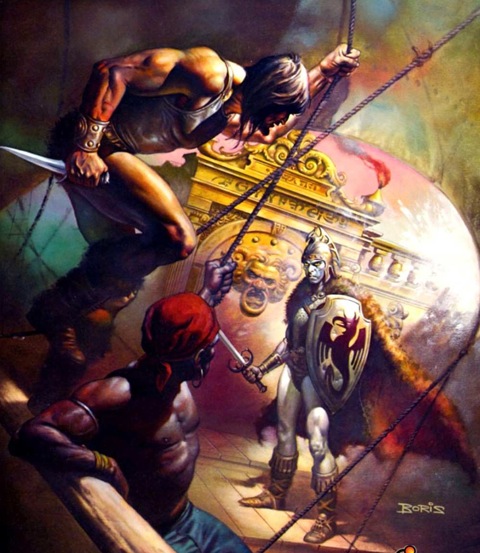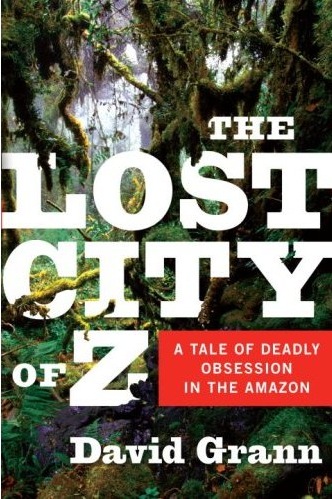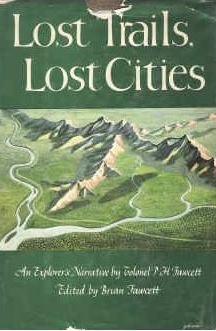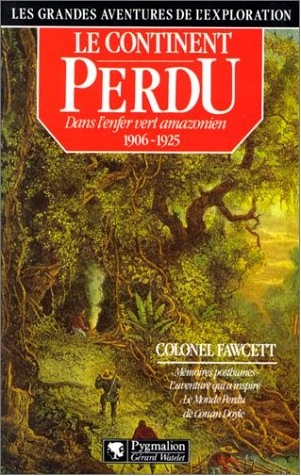Green Hell, Golden Civilization?
Wednesday, February 25, 2009
posted by Steve Tompkins
 Print This Post
Print This Post

Were someone to press a Kampfpistole against my head and demand to know which de Camp and Carter Conan novel I deemed the least feloniously FUBAR, I’d have to go with Conan of the Isles, mostly because of two paragraphs on the second-to-last page:
Even farther west, at the very rim of the world, the old thief had confided, lay a vast new continent, Mayapan, the Atlanteans and their Antillian descendants had called it. They raided its coasts for gold, emeralds, and virgin copper, for red-skinned slaves and curious birds with gorgeous plumage; for tiger-like cats whose pelts were marked with black rosettes on tawny gold. Here, too, were barbarian states founded by renegades from Atlantis and Antillia, where the cults of the Great Serpent and of the Saber-toothed Tiger carried on their ferocious rivalry in a welter of human sacrifice and abominable worship.
A new world, he thought; a world of trackless jungles and spacious plains, of towering mountains and hidden lakes, where immense rivers writhed like serpents of molten silver through depths of emerald jungle, where unknown peoples worshiped strange and fearsome gods…
Black rosettes on tawny gold, serpents of molten silver — the blaze kindled here would leap from Lin Carter’s prose (this passage reads much more like Carter than his senior partner) to the imaginations of many of his youthful readers. Would the promise of Robert E. Howard’s revelation, in the 1936 letter to P. Schuyler Miller we’ve been parsing for so many decades, that Conan visited a “nameless western continent” be fulfilled in Mayapan? We never got any closer than the Isles fadeout. Later, during the Great Glut of the Tor years, in Conan and the Amazon John Maddox Roberts’ Cimmerian actually expressed a desire to cross the Western Ocean someday, teasing us with with the possibility that the writer responsible for that adrenaline-spike alternate history King of the Wood (the Mongols and their samurai shock-troops besiege Tenochtitlan!) might explore Mayapan. No such luck; perhaps those with veto-power at Tor nixed an Oldy Oldson Conan.
But that which sword-and-sorcery has withheld from us, archaeology seems willing to deliver, vindicating Percy Harrison Fawcett in the process. In today’s Boston Globe article “Finding the Lost City” David Grann excerpts his new book The Lost City of Z:

Using aerial photography and satellite imaging, scientists have also begun to find enormous man-made earth mounds and causeways across the Amazon — in particular in the Bolivian flood plains where Fawcett first found his shards of pottery. Clark Erickson, an anthropologist from the University of Pennsylvania who has studied these earthworks in Bolivia, says that the mounds allowed the Indians to continue farming during seasonal floods. To create them, he said, required extraordinary labor and engineering: tons of soil had to be transported, the course of rivers altered, canals excavated, and interconnecting roadways and settlements built. In many ways, he said, the mounds “rival the Egyptian pyramids.”
Some scientists now believe the rain forest may have sustained millions of people. And for the first time scholars are reevaluating the El Dorado chronicles that Fawcett used to piece together his theory of Z. Though no one has found evidence of the fantastical gold that the conquistadores had dreamed of, the anthropologist Neil Whitehead said, “With some caveats, El Dorado really did exist.”
These scholars say they are just beginning the process of understanding this ancient world — and, like the theory of who first populated the Americas, all the traditional paradigms must be reevaluated. “Anthropologists,” Heckenberger said, “made the mistake of coming into the Amazon in the 20th century and seeing only small tribes and saying, ‘Well, that’s all there is.’ The problem is that, by then, many Indian populations had already been wiped out by what was essentially a holocaust from European contact. That’s why the first Europeans in the Amazon described such massive settlements that, later, no one could ever find.”
Fawcett often complained about his many detractors, about the “men of science” who had “in their day pooh-poohed the existence of the Americas — and, later, the idea of Herculaneum, Pompeii, and Troy.” He spoke of his vision of a majestic culture rising in the Amazon and radiating outward, before being finally overwhelmed and swallowed by the lianas and creepers and palms. And in his final letter, which was carried out of the jungle by an Indian runner before he vanished, Fawcett assured his wife: “You need have no fear of any failure.”
It’s too perfect that Fawcett crossed paths with H. Rider Haggard. The Pacific hasn’t yielded up Skull Island, R’lyeh, and the Isle of the Eons yet, but the oceanic vegetation of Amazonia might be more forthcoming. Thanks to Clark Ashton Smith’s “The Seed from the Sepulchre,” we have a pretty good idea of how this civilization became “lost,” but what wars were waged, what demons were appeased, what god-kings dreamed obsidian-and-ophidian dreams?


